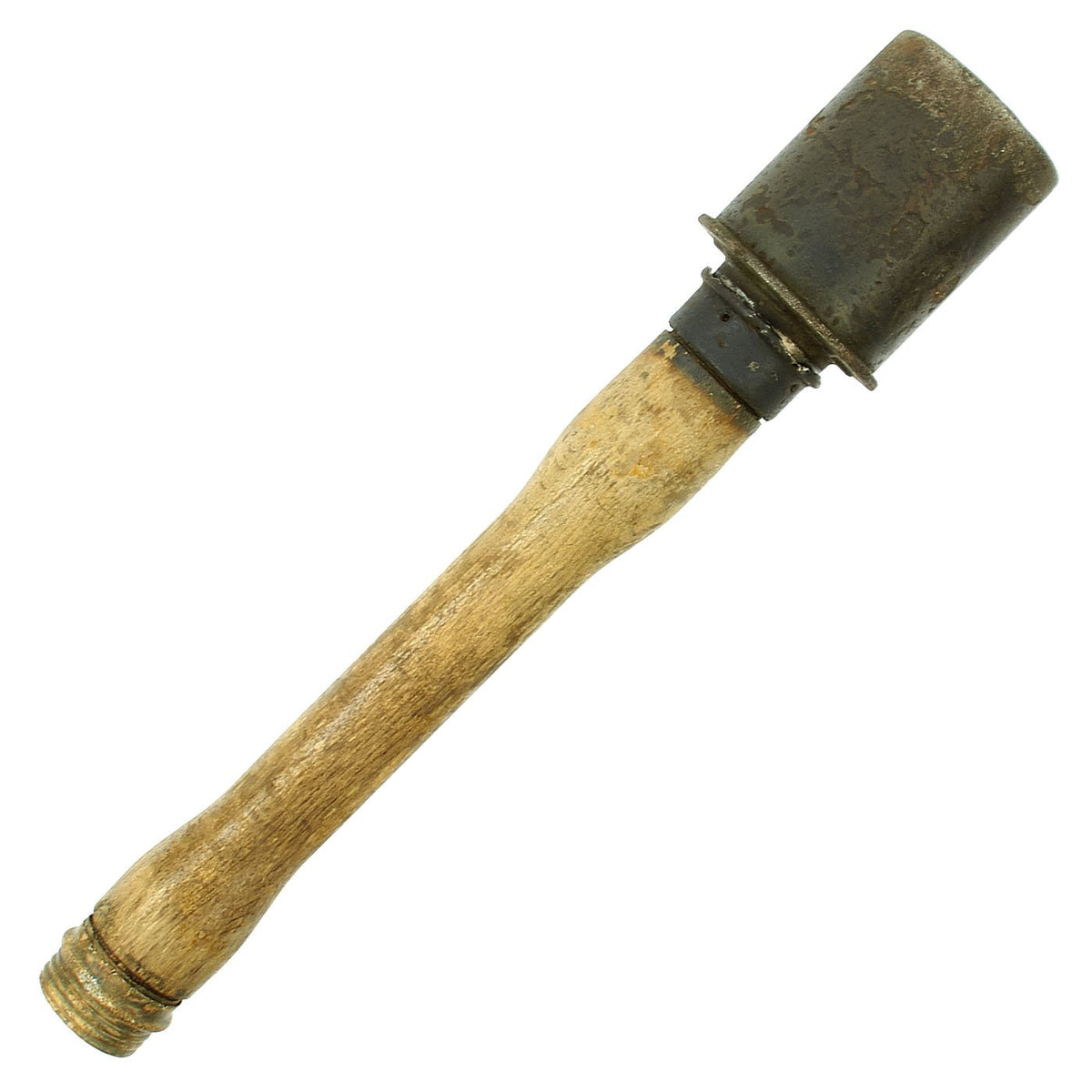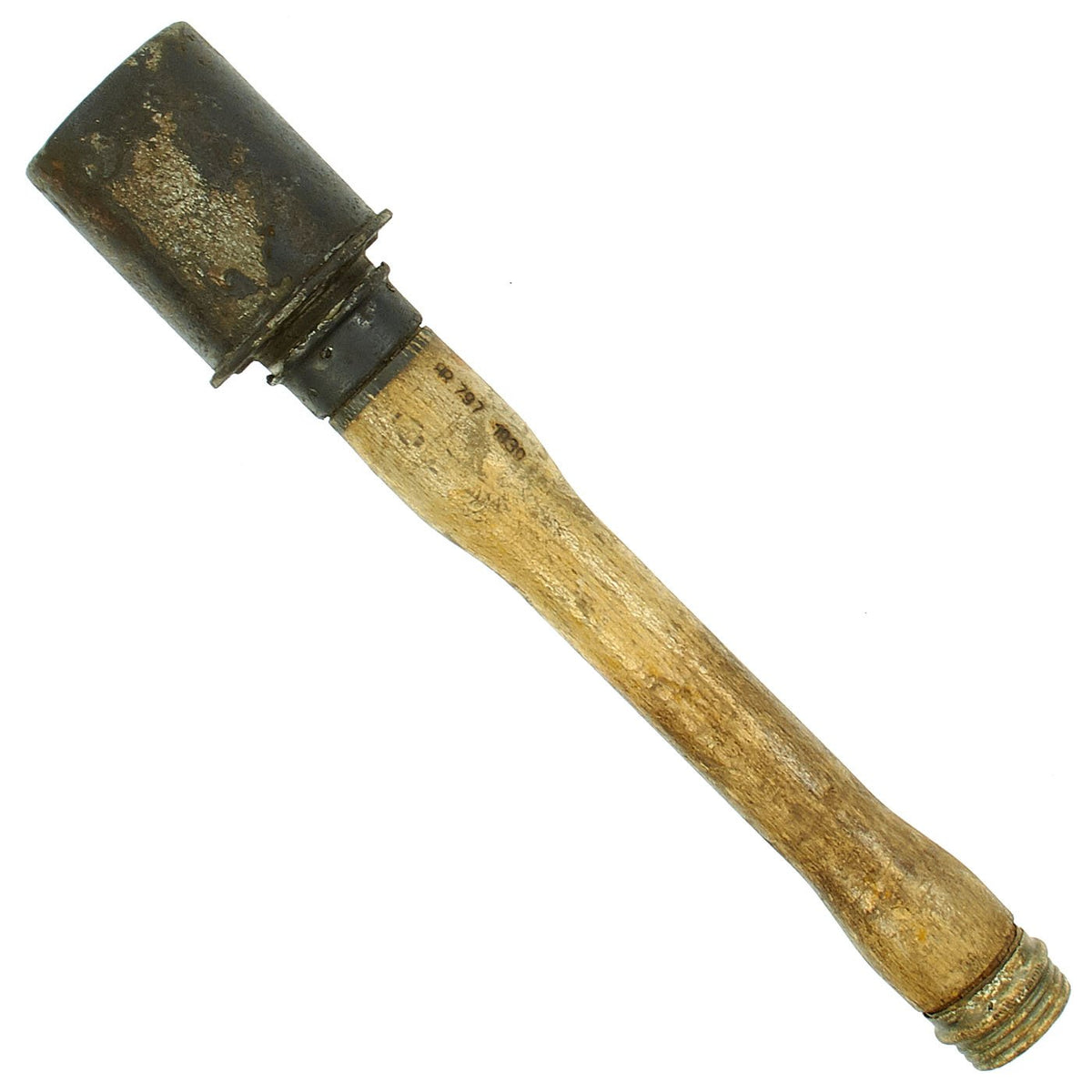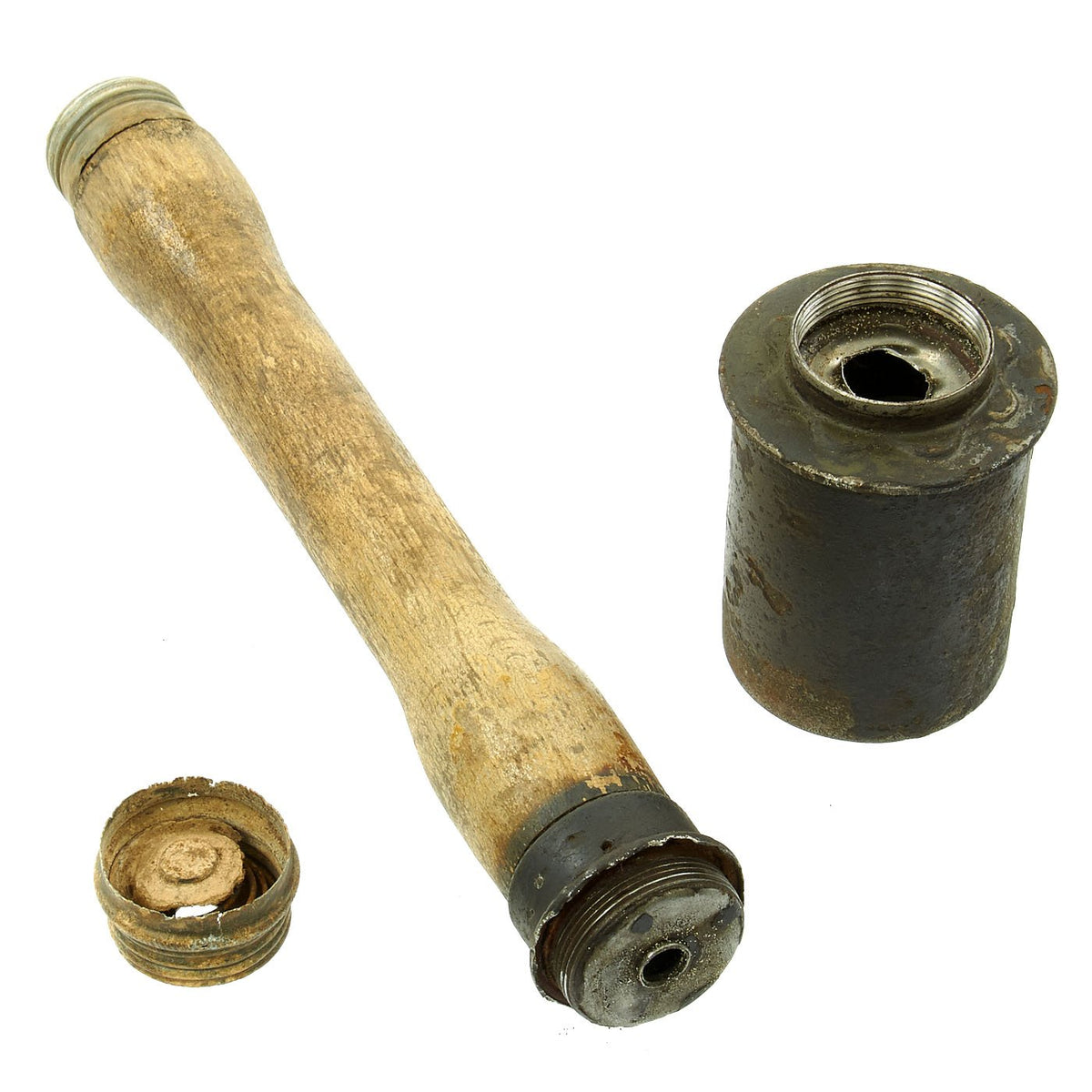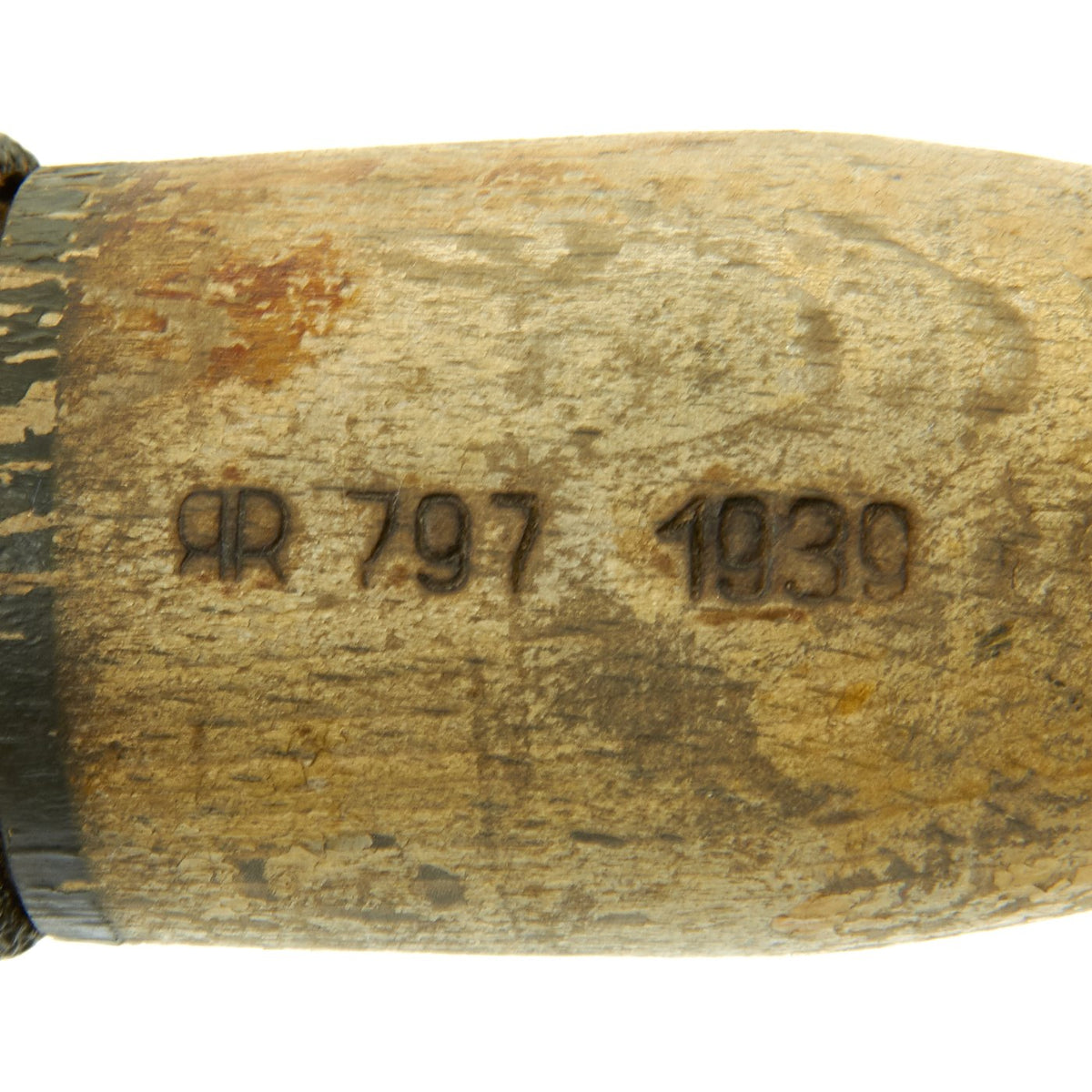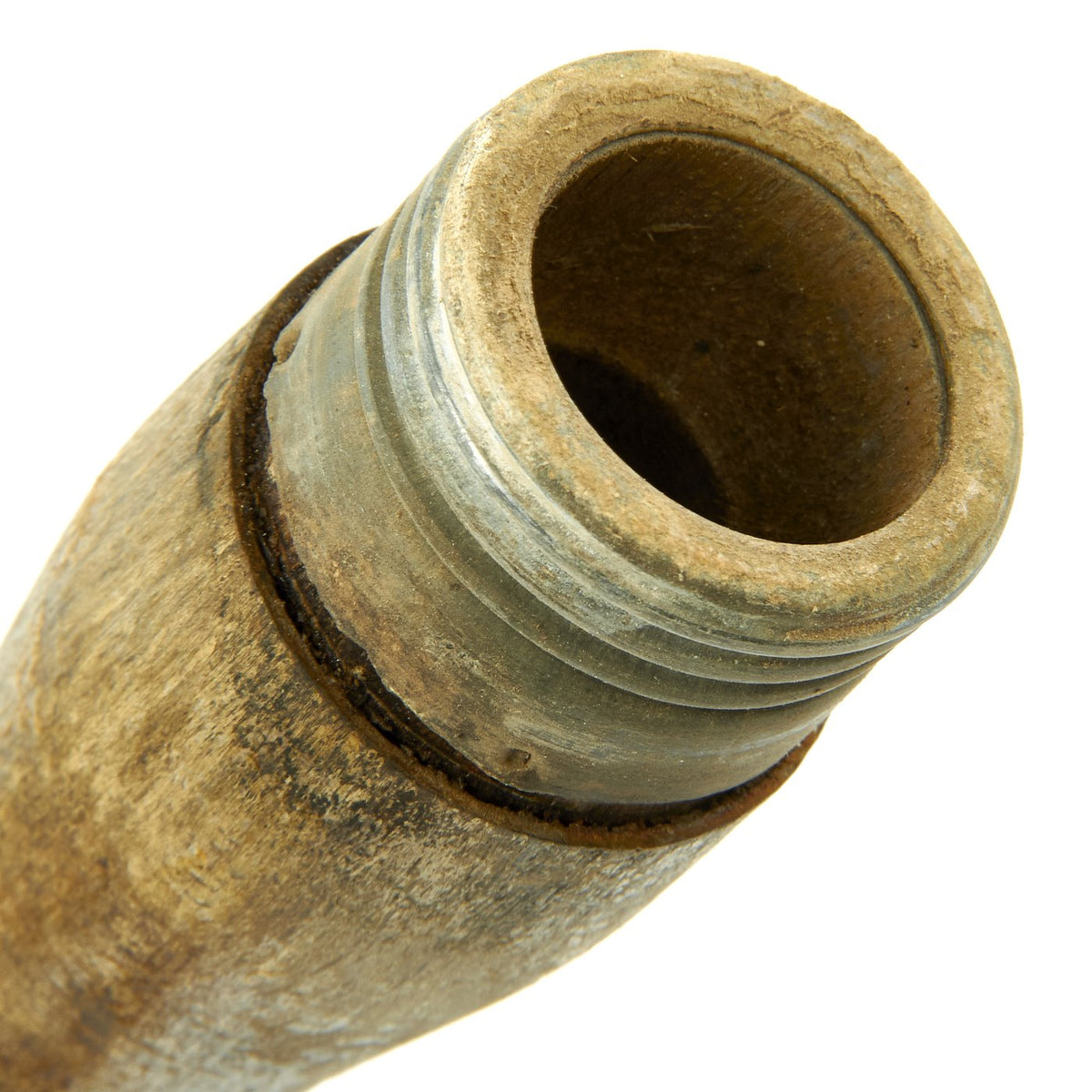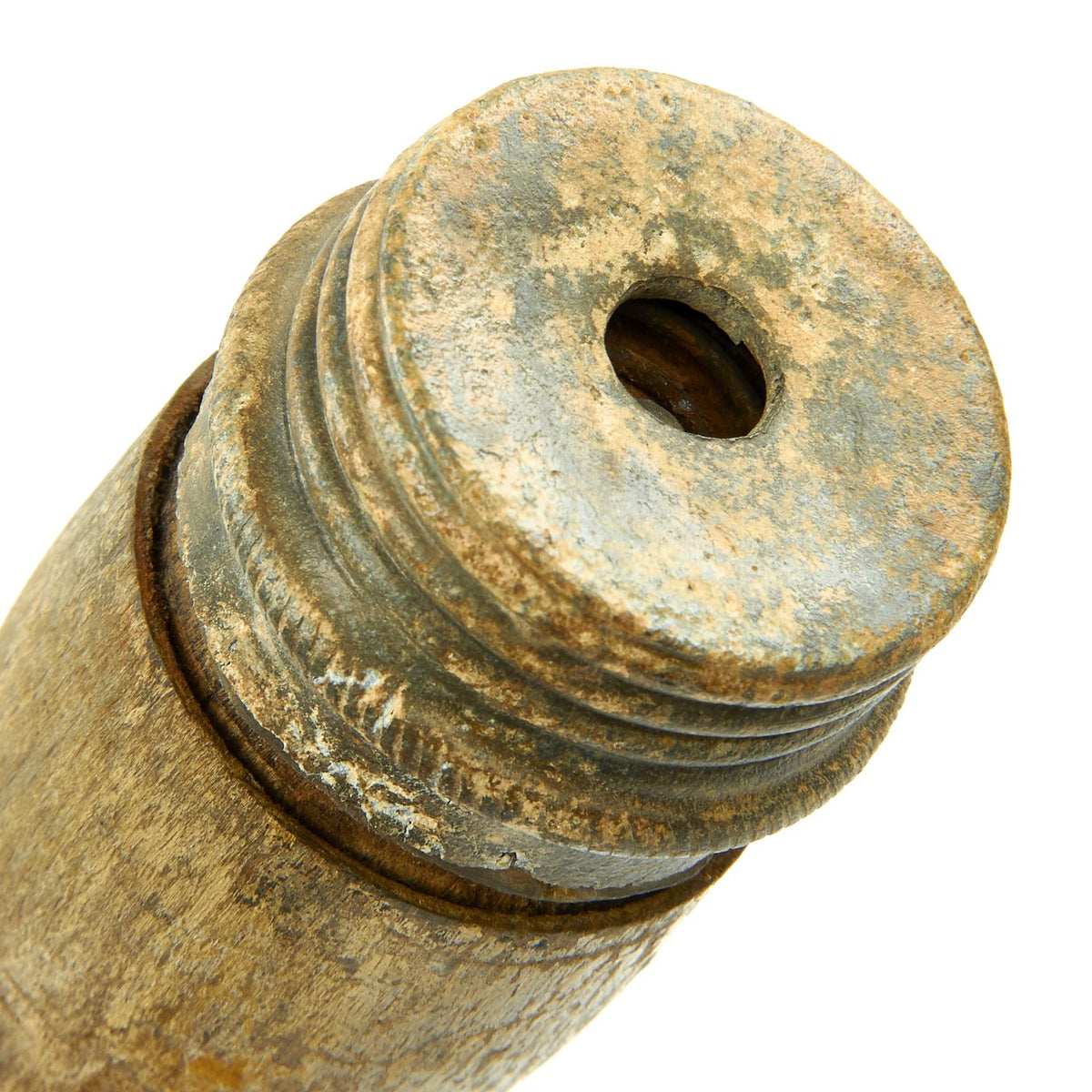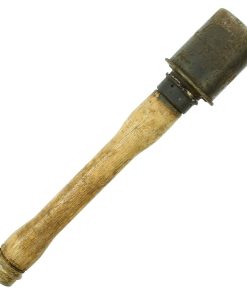Original German WWII 1939 / 40 dated M24 Stick Grenade by Richard Rinker – Stielhandgranate Original Items
$ 695,00 $ 208,50
Original Item: Only One Available. This is an extremely rare M1924, M24, or “Stielhandgranate (stalk hand grenade) 24″ German Stick Grenade, often called a “potato masher”. This example, acquired from the family of a WWII veteran, has been demilitarized according to specifications by the BATF. The warhead still unscrews. It still retains its original paint, and the original markings can be seen on the head and shaft of the grenade.
The warhead is in very nice condition and easily unscrews from the shaft. It still has some of the original green paint, and is maker marked on the top with RR 513 1940, which corresponds to the manufacturer Richard Rinker G.m.b.H. in Menden/Iserlohn, the original designer of the M24 grenade. This company had many factories and subcontractors, which is what the number 513 corresponds to. There is some past pitting on parts of the warhead, but it has been neutralized, and preserved as found.
The wood shaft of the grenade is marked ЯR 797 1939, another marking that Richard Rinker used, with the slightly earlier “reverse R” marking. The wood shaft handle is very nice, with the wood in great shape, with no major denting or cracks, as shown. The lower spring loaded screw cap is complete and unscrews, though it is definitely worn from age and use. The shaft is correctly hollow to allow the internal components and porcelain “donut” bead with pull string.
In WWII the stick of the German M24 (Model 24) grenade provided a lever, significantly improving the throwing distance. The Model 24 could be thrown approximately 30 to 40 yards, whereas the British Mills bomb could only be thrown about 15 yards. The design also minimized the risk of the grenade rolling downhill back towards the thrower when used in hilly terrain or in urban areas. These grenades were extremely useful for clearing out entrenched infantry positions.
As grenades were disposable, encountering them on the market is very rare, especially with the original pull string and weight, making this an excellent opportunity to acquire one to complete a WWII ordnance collection.
Fast Shipping with Professional Packaging
Thanks to our longstanding association with UPS FedEx DHL, and other major international carriers, we are able to provide a range of shipping options. Our warehouse staff is expertly trained and will wrap your products according to our exact and precise specifications. Prior to shipping, your goods will be thoroughly examined and securely secured. We ship to thousands clients each day across multiple countries. This shows how we're dedicated to be the largest retailer on the internet. Warehouses and distribution centres can be located throughout Europe as well as the USA.
Note: Orders with more than one item will be assigned a processing date depending on the item.
Before shipping before shipping, we'll conduct a thorough inspection of the items you have ordered. Today, the majority of orders will be delivered within 48 hours. The delivery time will be between 3-7 days.
Returns
The stock is dynamic and we cannot completely manage it because multiple stakeholders are involved, including our factory and warehouse. So the actual stock may alter at any time. It's possible that you may not receive your order once the order has been made.
Our policy is valid for a period of 30 days. If you don't receive the product within 30 days, we are not able to issue a refund or an exchange.
You can only return an item if it is unused and in the same state as the day you received it. You must have the item in its original packaging.
Related products
Uncategorized
Band of Brothers ORIGINAL GERMAN WWII Le. F.H. 18 10.5cm ARTILLERY PIECE Original Items
Uncategorized
Uncategorized
Uncategorized
Uncategorized
Uncategorized
Uncategorized
Australian WWII Owen MK1 Machine Carbine SMG Custom Fabricated Replica with Sling Original Items
Uncategorized
Armoured Fighting Vehicles of the World: AFVs of World War One (Hardcover Book) New Made Items
Uncategorized
Uncategorized
Uncategorized
Uncategorized
Uncategorized
Uncategorized
Uncategorized
